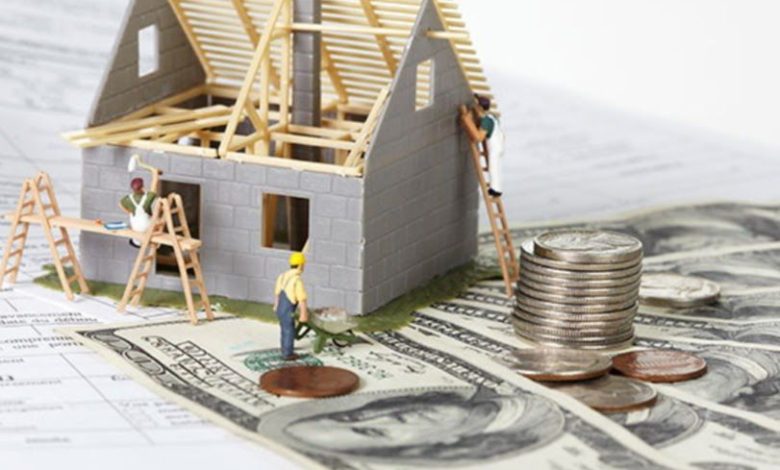How To Choose The Right Lender For Your New Construction Loan

Choosing the right lender is essential to ensure your home-building experience is as smooth and successful as possible. Look for a local lender with low rates and flexible loan terms.
Many lenders offer construction-to-permanent loans that convert into a permanent mortgage once the build is complete. This option reduces the number of closings, as well as financing costs.
1. Look for a Local Lender
A local lender can provide many benefits for homeowners seeking a new construction loan. Because these loans are often more complicated than mortgages and are more likely to be held by the bank until the project is complete, it is important to work with a lender that is familiar with construction loan requirements and has experience in this area. Additionally, a local lender will understand the market better and be able to offer more competitive rates.
When applying for a construction loan, lenders will look at your financial history to ensure that you are able to repay the debt. This will include looking at recent pay stubs, tax returns and bank statements. Lenders may also ask for a down payment, and will typically require a credit score of at least 680.
Another requirement for a construction loan is a detailed plan for how you will repay the loan. This plan must include a timeline for the building project as well as a budget. A local lender will be able to help you create this plan and walk you through the process of submitting it to your lender.
Local lenders have years and sometimes decades of experience in their communities and can offer the expertise necessary to make your construction loan successful. They can be a great resource for you and your builder and will be able to answer any questions you may have about the loan process.
In addition, a local lender will be familiar with the builders in your community and will know which ones are reputable and trustworthy. They will also be able to provide you with referrals for builders who have worked successfully with other borrowers. This can save you time and hassle by allowing you to choose a builder that has a track record of working with local lenders.
A local lender will be able to offer you the option of a construction-to-permanent loan, which is a convenient way to finance your home’s completion. This type of loan is a good choice for many borrowers as it allows them to avoid paying interest on both the construction and permanent loans simultaneously.
2. Check the Lender’s Credentials
The lender you choose will have a big impact on the terms of your loan, so it is important to shop around. Look for lenders who specialize in new construction loans and compare their terms and rates to find the best deal.
Lenders that offer construction loans typically have specific qualifications that they require borrowers to meet before they will approve a loan. These requirements can vary from one lender to the next, but some common requirements include:
Proof of sufficient income to repay the loan. This may be accomplished through recent pay stubs, tax returns, or bank statements. Some lenders also require a certain amount of cash reserves in reserve. A high credit score. Most lenders will want a borrower’s credit score to be at least 680, although some may require a higher score. A low debt-to-income ratio. This measures the amount of monthly debt payments a borrower has to make compared with their gross monthly income.
A detailed timeline, plan, and budget for the project. This will help the lender determine whether or not the project can be completed within the loan term. Lenders will usually only extend a construction loan for the duration of the construction period, which is why it’s important to have a realistic budget and timeline in place.
Information about the contractor. The lender will want to make sure that the contractor is qualified, licensed, and insured. They will also want to review any contracts between the borrower and the builder. In some cases, the lender will also want to see that the contractor is up to date on any required certifications, such as ADA compliance, for example.
Interest rates for construction loans can be fixed or variable, and they will likely be slightly higher than standard mortgage rates. Borrowers should carefully assess their finances to determine if the higher interest rate is something they can afford. They should also consider whether they want to lock in a fixed rate or choose a variable rate, as this will have a significant effect on the total cost of the loan over its lifetime.
3. Check the Lender’s Fees
The process of purchasing a new home or building a dream home is an exciting, but taxing endeavor. As a result, prospective borrowers should consider all their options carefully and choose the right lender for them. This means vetting potential lenders to ensure that they offer the best mortgage products, services, and pricing.
One thing that buyers should do before choosing a construction loan is check the lender’s fees. These fees may include the cost of inspections, recording fees, and more. These fees can add up quickly, so a borrower should be aware of them before signing any contracts.
Another factor to consider is the lender’s service area. Some mortgage companies have a nationwide footprint, while others only provide construction loans in specific states or regions. By checking a lender’s service area, a borrower can quickly narrow down the list of potential candidates.
Once a borrower has found the right lender, they should then look at their options for a new construction loan. The first option is a traditional mortgage loan, which offers flexible terms and competitive rates. This option is typically the best choice for borrowers with excellent credit who can afford the monthly payments while their house is under construction.
Alternatively, a borrower can opt for a construction-only loan. These loans are often more affordable than mortgages, and they offer a variety of benefits, including the ability to shop permanent loan options while the house is under construction. However, this type of loan can be more difficult to qualify for than a mortgage.
A third option is a hybrid construction-permanent loan. This is a good option for borrowers who want to build their dream home, but aren’t sure what they’ll do once the house is finished. This type of loan offers a fixed rate for the duration of the construction period and then switches to a variable rate once the house is complete. This gives borrowers the flexibility to choose between a fixed and floating interest rate, depending on the current market conditions. It also allows borrowers to save on closing costs by paying just one set of fees.
4. Check the Lender’s Reputation
The process of obtaining a new construction loan adds an extra layer of complexity to home buying. Buyers who are looking for a lender that will make the process of financing their dream home as stress-free as possible should look for a lender with a reputation for providing excellent customer service, offering competitive rates and terms, and allowing borrowers to work with an experienced mortgage professional from start to finish.
Home buyers should also take a close look at the lender’s credit requirements to ensure they will qualify for a new construction loan. Since home construction loans present a greater risk to lenders than mortgages, many lenders may impose stricter credit standards on applicants. Some lenders may require a credit score of 720 or higher, while others may use other metrics such as debt-to-income ratio to gauge whether the borrower has enough money left over each month to pay for the construction loan and their other debts.
Another important factor to consider is the lender’s interest rate. Some lenders offer both fixed and variable rates, and borrowers should weigh their options carefully to determine which type of interest rate will best suit their needs. Variable rates are typically tied to prevailing mortgage rates, which means that they can rise and fall over time. A fixed rate, on the other hand, will remain the same throughout the life of the loan.
Buyers should also look for a lender that offers a variety of different loan types. In addition to the standard construction-to-permanent loan, some lenders may offer a construction-only loan or a renovation loan. These different loan types can be helpful for borrowers who are unsure about what type of home they want to build, as these loans allow them to focus solely on the home construction itself without worrying about the purchase price of an existing property.
Finally, home buyers should be sure that the lender they choose will provide adequate insurance coverage during construction. The mortgage company should require that the contractor carry General Liability Insurance, which covers any harm caused to a non-worker during the construction process, as well as Builders Risk Insurance, which will cover damage to the unfinished structure.




